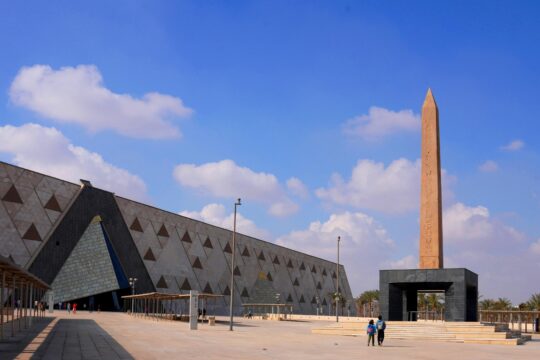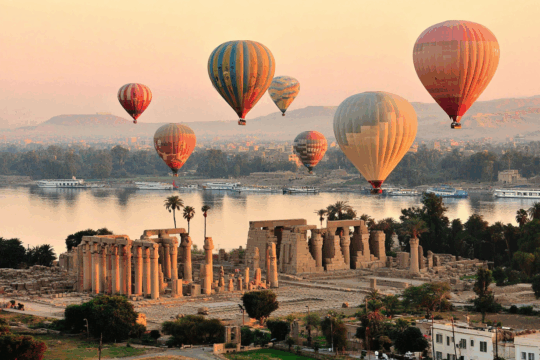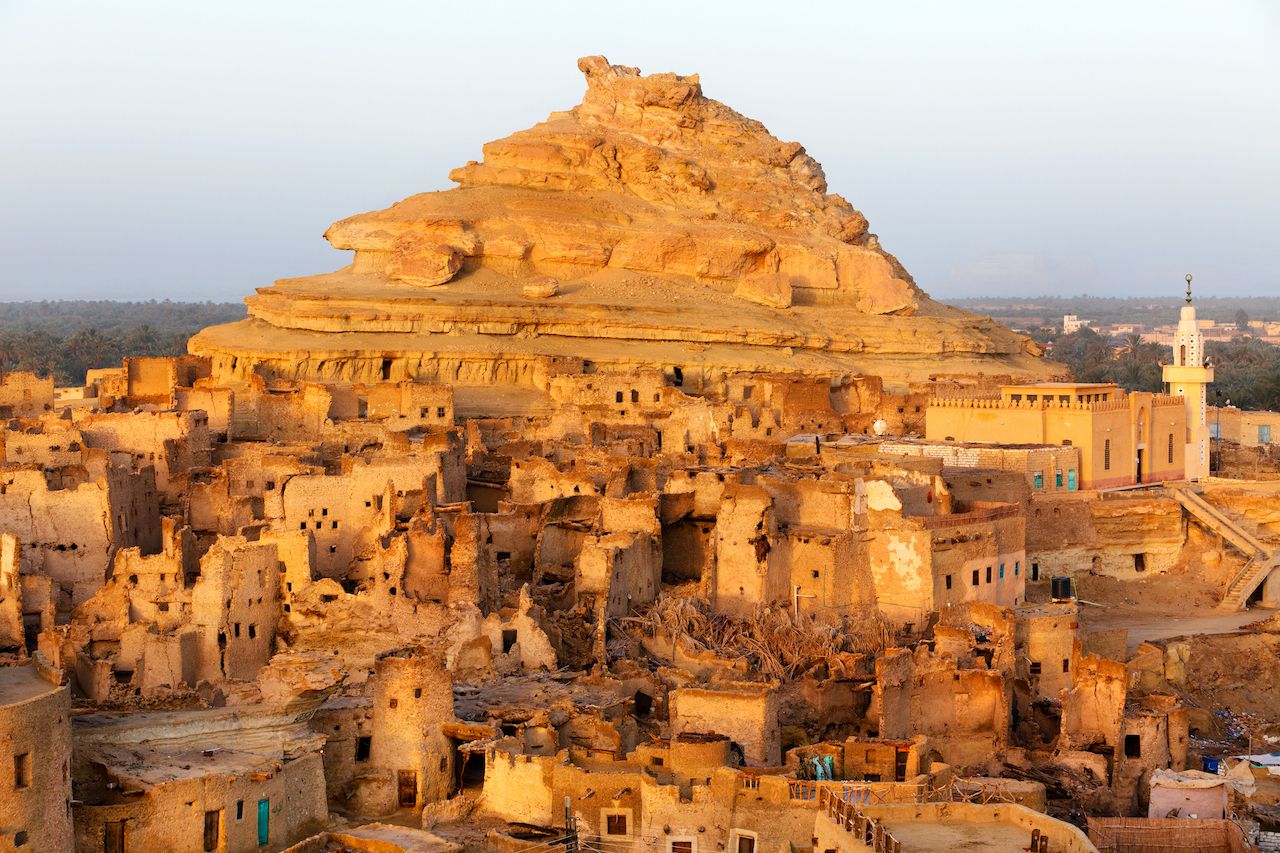
Siwa Oasis is one of the most beautiful locations in Egypt. As you start your journey to this unique place, you will feel overwhelmed by nature and history. Life has slowed down here, and the days are saturated with the breath of nature, wide-stretching palm palms, ancient Egyptian temples, sand dunes, nice people, and local legends. The architecture is distinctive, and the local customs and culture of the oasis’s original residents, the Berbers, contribute to a unique direct experience of timeless existence in a desert setting. In other words, you’ll discover all of the components for the perfect trip in one spot.
In the middle of the Sahara desert, the Siwa Oasis is one of Egypt’s most remote locations and a hidden gem. It can be reached from the coastal city of Marsa Matrouh and is located in the western part of the country, not far from the Libyan border.
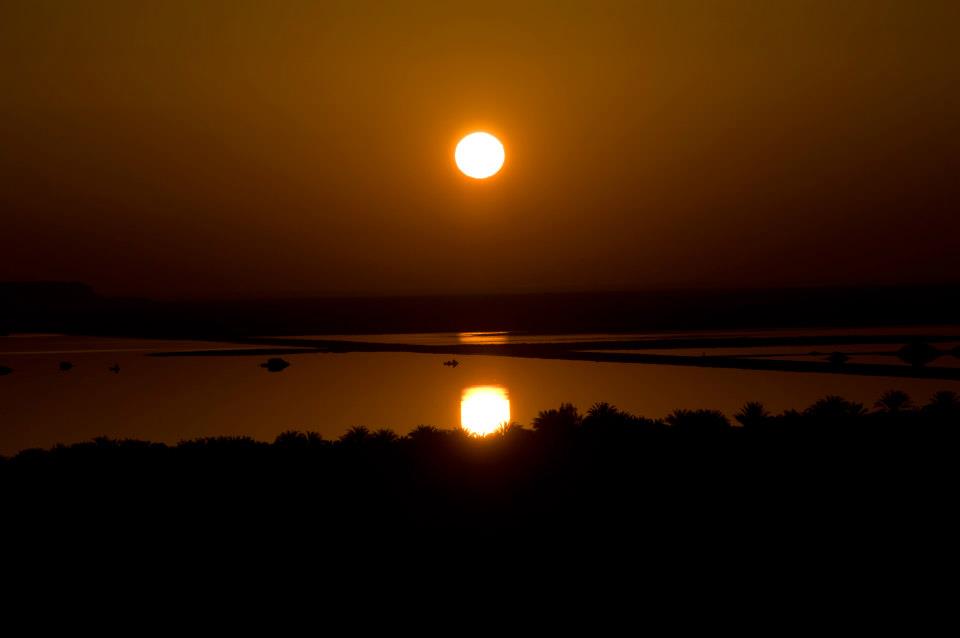
Siwa is protected as a cultural landmark in a big desert. After Gilf Kebir National Park, Siwa Oasis is the most remote and exotic location in Egypt in some ways. Although getting there sounds like an adventure in the desert, the north coast and western oasis are connected by a road system.
The trip to Siwa Oasis, the hidden gem of Egypt, is a unique and captivating culture, spectacular desert scenery, and a plethora of outdoor activities. Siwa Oasis is a desert oasis located in the Western Desert of Egypt, near the border with Libya. It is home to a population of around 25,000 Berber-speaking people, known as Siwans.
What is Siwa Oasis famous for?
Siwa Oasis is well-known for its breathtaking natural beauty, distinct culture, and rich history. With a population of roughly 33,000 inhabitants, it is one of Egypt’s most remote villages, located in the Western Desert. Many ancient sites may be found in the oasis, including the Temple of the Oracle, which goes back to the 6th century BCE and was visited by Alexander the Great. Siwa is also recognized for its traditional crafts, like basket making and needlework, as well as its unusual architecture, which includes the ancient town’s mud-brick structures. Along with bathing in the natural pools, tourists may also enjoy desert safaris, camel rides, and stargazing.
Top Attractions in Siwa Oasis
This oasis is one of the most remote and least-visited places in Egypt. This makes it the perfect place for travel adventurers and home to the most unique attractions and sightseeing in the western desert.
List of top attractions in Siwa
- Shali Fortress
- The Temple of the Oracle
- Siwa Salt Lakes
- Gebel Al Muwata – Mountain of the Dead
- The Temple of Amon
- Cleopatra Spring
- Gebel Al Dakrur
- The Great Sea of Sand
- Siwa Lake
Shali Fortress
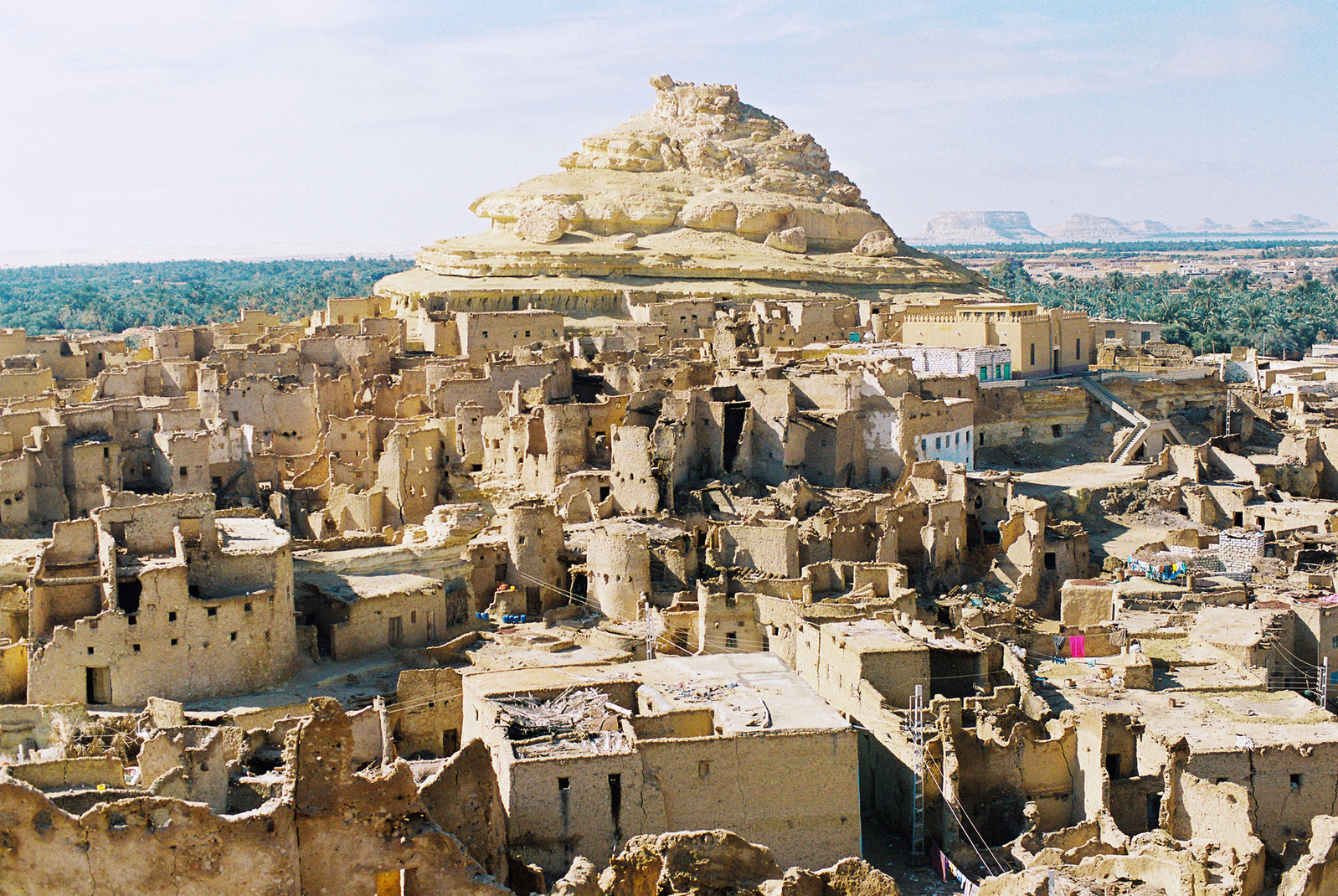
The Shali Fortress, a complex of mud-brick structures constructed on a hill behind a Defensive wall and initially breached by a single gate, provided shelter and services to the oasis’s residents for over eight centuries. The locals were crammed into small spaces and forced to share their animals, which were brought into the stronghold every night.
Large pieces of salt that are common in the Siwa oasis were utilized to build the fortress’s walls, which has helped to ensure that it would withstand any potential attackers.
You can’t miss Shali while visiting Siwa since it occupies a prime spot in the main square of Siwa. From the peak, you can see the entire town and the Mountain of the Dead, as well as the Siwa Oasis, olive and palm groves, salt lakes, and a substantial chunk of the desert. The area directly below the ruins of Shali Castle is beautifully lit up at night, making it a great vantage point for photographs.
A knowledgeable guide is essential for adding context and joy to your tour of the old town. Indeed, it is worth investing some money to learn the history of the sight.
The Temple of the Oracle
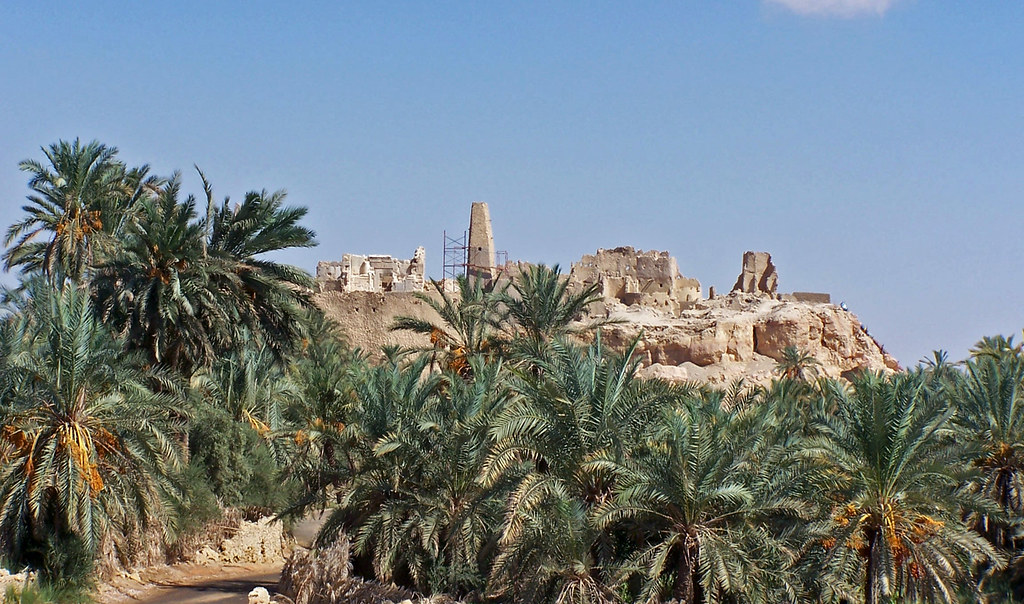
The temple is quite magnificent. Amun’s temple and its oracle thrived far into the Greek and Roman eras after they were constructed in the 26th dynasty. The mountaintop temple was constructed with a clearly indicated trail leading up to the ruins.
The Greek deity Dionysus is credited with laying the temple’s foundation, according to one tale, while an Egyptian named Danaus is credited with building the temple to honor Noah’s son Ham. When disoriented in the Western desert. Dying of thirst, Dionysus was led to the spring of Agroumi by a ram. Dionysus built the temple as an act of gratitude.
Oracles, who were considered God’s direct manifestations, were consulted often by ancient societies before making life-altering choices because of their ability to foretell the future.
Alexander the Great may have wanted to verify rumors that he was the son of Zeus by consulting the Siwan Oracle. When Zeus and his crew first landed in ancient Greece, Eighty priests led a manifestation of the oracle across the city. As depicted on Egyptian coins after Alexander’s trip to the oracle, he always sported the ram’s horns as a nod to Amun, the deity of pharaohs.
The Siwa Salt Lakes

This wonderful region full of salt lakes has been documented by many notable Youtubers and travel bloggers as one of the most trending sites in Siwa. The location is incredibly interesting, but it’s not simple to get to because it’s 15 to 20 kilometers away from Siwa. The salt lakes are one-of-a-kind locations that do not exist anywhere else in Egypt. You don’t need to swim to get above the water. Swim with caution and avoid allowing water to enter your eyes. because it is quite uncomfortable.
There are several crystal lakes to choose from. When you reach the bottom, keep seeking the purest one. After swimming in the lake, bring a bottle of mineral water to shower with. The salt lakes exhibit hyper-salinity features akin to Jordan’s Dead Sea. This also implies that the lakes have powerful healing capabilities, far superior to normal saltwater. In every case, they make for a fantastic swim.
Gebel Al Mawta ( The Mountain of the Dead)
There is a conical peak called Gebel Al Mawta, Mountain of the Dead, located about a kilometer to the north of Shali. Gebel Al – Mawta is home to four impressive tombs carved into the mountainside during the 26th Dynasty, Ptolemaic, and Roman eras.
The Niprpathot Tomb
It is likely that the Niperpathot Tomb dates back to the 26th dynasty of Egyptian history, making it one of the oldest tombs in the oasis. On the Mountain, there is a court with three graves. Niperpathot was the scribe of the diving papers and the Prophet of Osiris.
The tomb of the crocodile
Three chambers with statues of Osiris, Hathor, and the crocodile Sobek may be found at the tomb of the crocodile, which was discovered in 1941.
The Tomb of Si Amun
This is the most stunning structure in all of the Western Desert. This exquisite picture of the goddess Nut standing next to a sycamore tree is among the many images from the Egyptian pantheon found in the tomb of a rich Oasian named Si Amun.
The Temple of Amon
The Temple of Amon also known as Umm Ubaydah temple is located near the Temple of the Oracle. This edifice is nearly totally ruined as a result of its dynamiting in 1896 by an Ottoman governor looking for building materials. All that remains to be seen is an inscribed wall. Scholars have inferred that the temple was built by Pharaoh Nectanebo of the 30th Dynasty based on previous drawings by pioneer explorers.
Cleopatra Spring
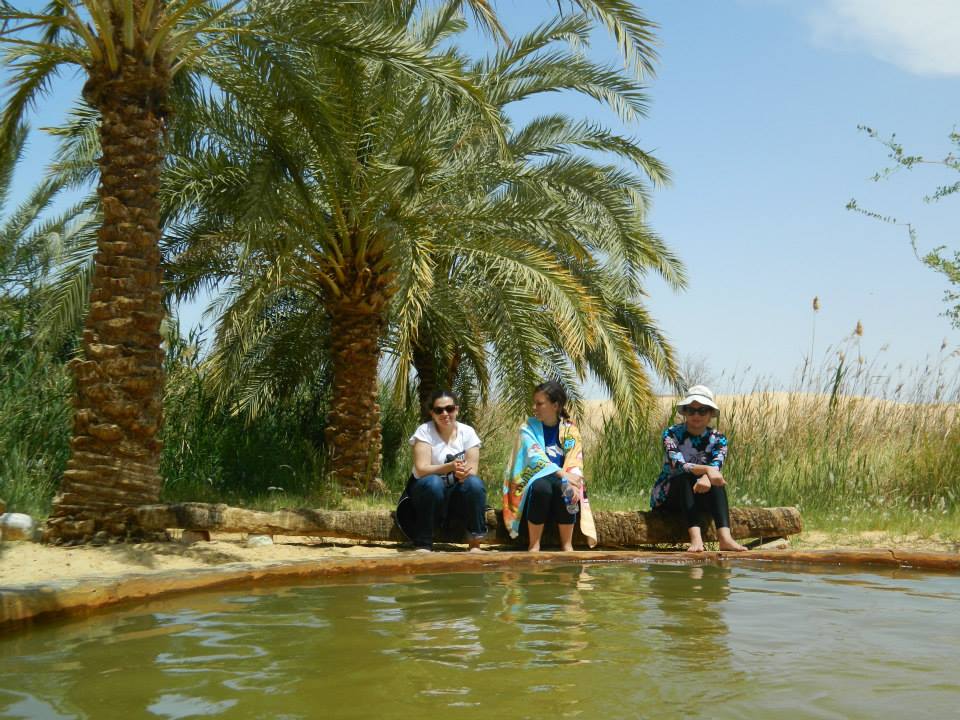
Cleopatra spring is a natural spring that bursts up from the earth in the Siwa Oasis. There are other springs located around the oasis, but this is the most well-known of them all. The water from this spring is so transparent that it would be undetectable if it wasn’t constantly moving. It fills a natural stone pool where people may bathe, swim, and relax.
Cleopatra’s Spa and pool is without a doubt the most popular of all the springs in the Siwa Oasis area, and tradition has it that the queen herself picked it for her personal bathing. Cleopatra’s Spa is a popular tourist destination in the town center. As a result, people should use caution while deciding where to bathe.
Take in mind that ladies from other regions of the globe may perceive clothes differently than Egyptians. If you opt to enter the waters as a lady, it is important to remain completely dressed. If you are a woman, you should anticipate glances no matter what you are wearing. If you want to change into different clothes before entering Cleopatra’s Spa, changing facilities are available to the public at Tanta Waa Café, which is close to the bath.
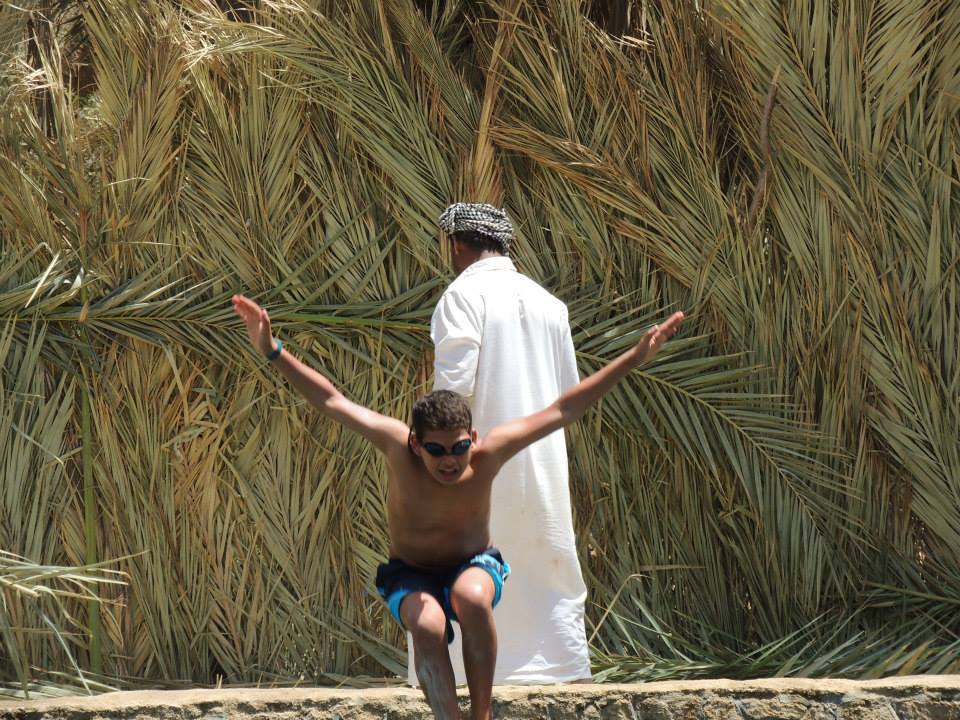
Tanta Wana Café views of Cleopatra’s Bath: Cleopatra’s Spa is one of the most popular sights in the Siwa Oasis, so expect a large number of visitors. It is located on the same path that leads to the Temple of the Oracle. Furthermore, the spa is only down the road from the Umm Ubayed Temple. When visiting the Siwa region, most visitors make time to explore all of these sites.
Gebel Al Dakrur (Dakrur Mountain)

Located a short distance south of Shali, Gebel Al Dakrur’s three peaks can be seen everywhere in the oasis and serve as a useful marker when heading east or west. A spectacular panorama awaits you at the peak of this mountain. Siwa Oasis, where the Sand Heals Dakrur is home to three medical professionals who have made a name for themselves with their innovative remedies for arthritis and rheumatism.
During the warmest part of the year, people enjoy a sand bath ( July through September) people from all over the world, including Sweden and Germany, go to the Siwa oasis for its renowned healing properties. They stay at one of the mountainside clinics, where the staff begins their day by digging shallow graves in the sand to let the sun warm the mountainside.
At midday, when the sun is at its hottest, the patient lies in the hollow and is covered with additional hot sand, with less sand piled around the heart; after this, the patient is taken to a nearby tent, wrapped in hot blankets, and asked to drink herbal teas and chicken soup; the treatment lasts for five to seven days, during which the patient is not allowed to take a bath or consume any cold liquids; finally, the patient is allowed to take a cold shower. This is one of the greatest sightseeing in Siwa and the western desert of Egypt that comes with a rewarding treatment.
The Sand Dunes at the Great Sea of Sand
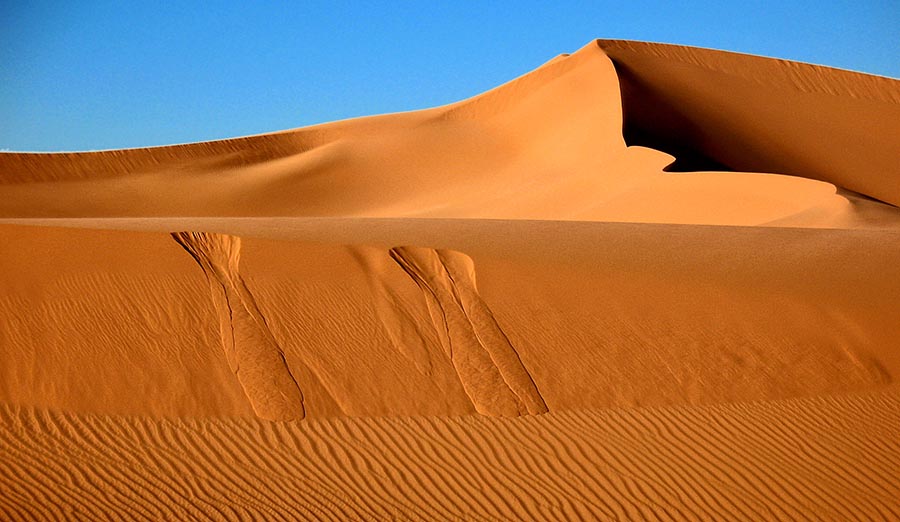
This is one of the natural wonders to visit one day and enjoy a safari, camping, or sandboarding. The Great Sand Sea is a 72,000-square-kilometer sand desert area in North Africa that stretches from Western Egypt to Eastern Libya. The Great Sand Sea, also known as the Libyan Erg, is the world’s largest and most deadly dune area.
Whole armies have vanished in the lonely stretch that produces one of the most magnificent sights in the Known world; it remains one of the globe’s major undiscovered locations to this day. The sea originates southwest of Siwa Oasis and extends south for almost 800 kilometers, passing west of Farafra and Dakhla oasis. Its dunes may reach a height of 150 meters. Except for the rare migrating bird that lands for a break, nothing lives in the Vast Sand Sea. To some, the sea is a wasteland, but to others, it is a gigantic enigma waiting to be unraveled.
Activities in Siwa Oasis
The Siwa Oasis is a unique place that offers a range of activities for visitors to explore. From ancient ruins to modern-day markets, there is something for everyone to enjoy. From exploring the local culture to taking part in outdoor activities, here is a guide to the best things to do in Siwa Oasis:
- Visit the Temple of the Oracle of Amun: The Temple of the Oracle of Amun is one of the most popular tourist attractions in Siwa Oasis. This ancient temple was built in the 4th century BC and is dedicated to the Egyptian god Amun. This temple is one of the most important archaeological sites in Egypt, and it is believed that it was here that Alexander the Great consulted the Oracle of Amun before his conquest of Egypt.
- Explore the Siwa Salt Lakes: The Siwa Salt Lakes are a series of natural salt lakes located in the desert surrounding the Siwa Oasis. These salt lakes are home to a variety of wildlife, including fish, birds, and reptiles. Visitors can take part in a variety of activities, including swimming, fishing, boat trips, and bird watching.
- Swim: Is it possible to swim in Siwa? Yes, swimming is a unique experience in Siwa. There are various natural springs, salt lakes, and pools with clean, pure water excellent for swimming in the oasis. Swimming in the oasis is not permitted in many regions, so it’s essential to check with local officials or guides before going for a swim.
- Visit Siwa Town: Siwa Town is the main settlement in Siwa Oasis. It is home to a traditional Berber-speaking population, and visitors can explore the local markets, visit the historic fort, and learn more about local culture and customs.
- Ride a bike: You can rent a bike and explore the old town or ride across the beautiful green fields and palm trees. You can rent bikes from the town at a reasonable price.
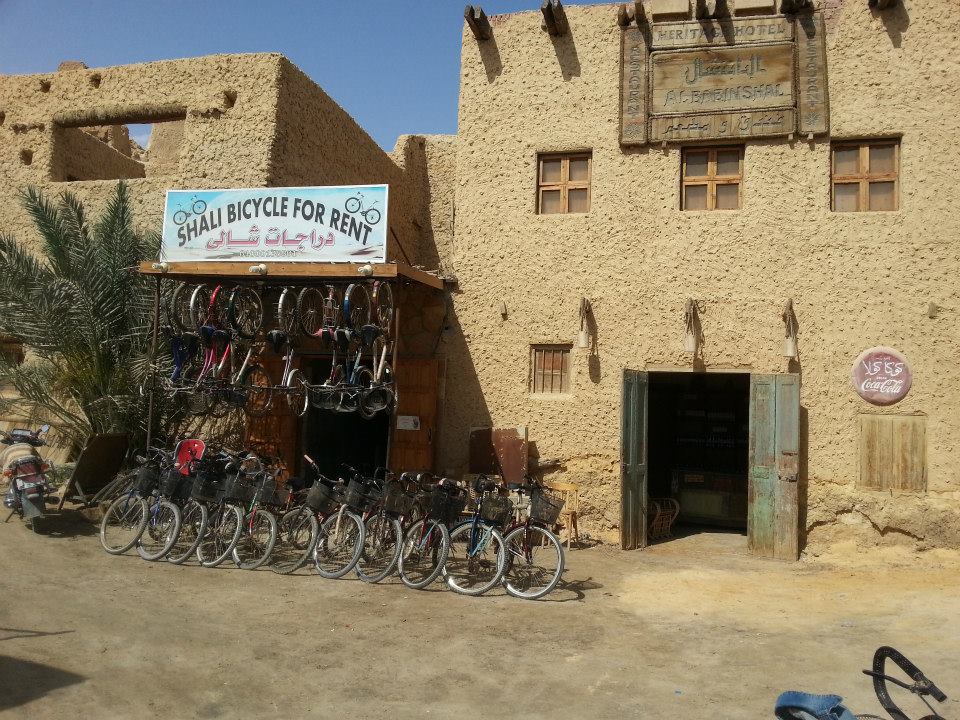
- Shop at the Siwa Markets: The Siwa Markets are a great place to pick up souvenirs and local crafts. The markets are full of colorful hand-crafted items, such as jewelry, pottery, carpets, and clothing.
- Go Desert Trekking: The desert around Siwa Oasis is the perfect place to go trekking. Visitors can explore the sand dunes and caves, and see a variety of wildlife.
- Visit the Siwa Oasis Hot Springs: Siwa Oasis is home to a number of hot springs, which are believed to have healing properties. Visitors can take a dip in the warm waters and relax in the natural environment.
- Take a 4×4 Safari: For an adrenaline-filled adventure, visitors can take a 4×4 safari through the desert. This is a great way to explore the desert and see some of the stunning scenery.
Siwa Trip
These are just some of the many activities that visitors can take part in during their visit to Siwa Oasis. The oasis is a truly unique destination, and visitors can feel like they’ve stepped back in time to an ancient world. If you’re planning a visit to Siwa Oasis, here is a suggested itinerary:
- Day 1: Arrive at Siwa Oasis, explore the Temple of the Oracle of Amun, and visit the Siwa Markets.
- Day 2: Spend the day exploring the Siwa Salt Lakes and go desert trekking.
- Day 3: Take a 4×4 safari and visit the Siwa Oasis Hot Springs.
- Day 4: Spend the day exploring Siwa Town and learning about local culture and customs.
- Day 5: Depart from Siwa Oasis. Siwa Oasis is an incredible destination that offers something for everyone.
Whether you’re looking for a relaxing getaway or an adventure in the desert, Siwa Oasis is the perfect destination for your next holiday. Check out the organized packages for the Siwa tour.
The Siwa Oasis has its own history
A footprint dating back three million years has been found by archaeologists. Throughout history, it served as a resting place for nomads and travelers in search of food and water. There is proof that people have lived here since the 29th century BC.
For instance, travelers like Alexander the Great and the Persian emperor Cambyses were drawn to the famed Amun temple’s 3000-year-old oracle.
The Siwa people are descended from desert nomads who lived in North Africa, and they still uphold their unique culture and language. The Moroccan Berber language and the Siwi language are closely related. When they arrived at the oasis, they developed their own crafts and a distinctive building style using local stones made of clay and salt.
The Siwa Oasis was influenced by Roman and Egyptian culture despite its isolation. Ancient ruins show a bustling, international trading post where people could come to trade away from the hot desert and where politicians could get prophecies and validation from the renowned oracle.
How to Get to Siwa Oasis
The Siwa Oasis is located around 752 kilometers from Cairo and it takes a full day journey. It is not common to find a commercial airline if you want to fly arrive straight to the oasis. Therefore, the best option it is to book your Siwa tour from Cairo with a travel agent or a tour company.
Siwa Tours:
Organized tours by travel agencies allow you to enjoy this trip since Siwa is the most remote place in Egypt. While Siwa is a famous destination visited by so many tourists and Egyptians, it requires private transportation and arranged accommodation. The hotels and ecolodges are limited choices and require advanced booking. Also, tours need to be organized ahead of time since some activities require logistics such as safari, camping, or sandboarding.
Public transportation:
If you want, buses from Cairo run on a regular timetable and will transport you right to the oasis. The day buses make several stops along the way, which is time-consuming if you are traveling on a tight schedule. The Trip duration can take between 9 to 12 hours. A nonstop night bus from Cairo brings you directly to Siwa Oasis but it is always recommended to travel during the daylight as the distance between Matrouh and Siwa can be unsafe at night due to road accidents and lack of emergency stations.
You can travel to Siwa from Alexandria by a minibus or from Marsa Matrouh. Travel agencies used to arrange safari from Bahriya and Frafra but this has been restricted for security reasons.
Where to Stay in Siwa Oasis?
There are a variety of accommodations in Siwa Oasis to suit different budgets for solo travelers and families. We have selected some of the most popular suggestions:
Low-budget hotels:
- Siwa Shali Resort: This budget-friendly resort is located in the heart of Siwa town and offers simple yet comfortable rooms, a swimming pool, and a restaurant. Prices start at around $20 per night.
- Taziry Ecolodge & Sustainable Village: This eco-friendly lodge is located on the outskirts of Siwa and offers basic but comfortable rooms, a restaurant, and a range of activities like desert safaris and yoga classes. Prices start at around $30 per night.
Luxury hotels:
- Adrère Amellal: This luxurious eco-lodge is located in a remote area of the oasis and offers stunning views, elegant rooms and suites, a spa, and a restaurant that serves organic cuisine. Prices start at around $500 per night.
- Shali Lodge: This high-end boutique hotel is located in the heart of Siwa town and offers beautifully designed rooms and suites, a swimming pool, and a rooftop terrace with panoramic views. Prices start at around $200 per night.

